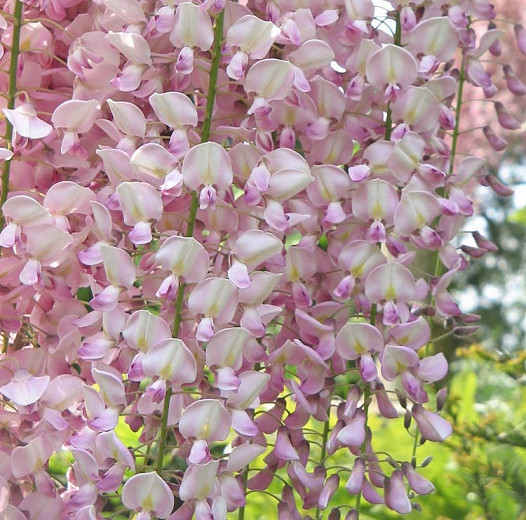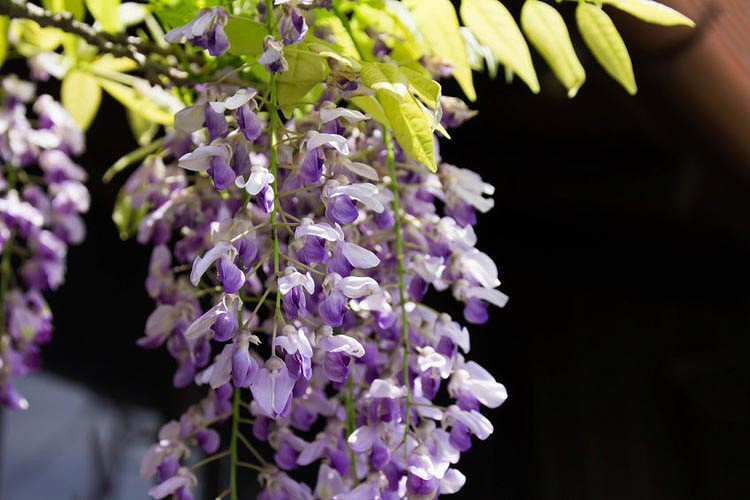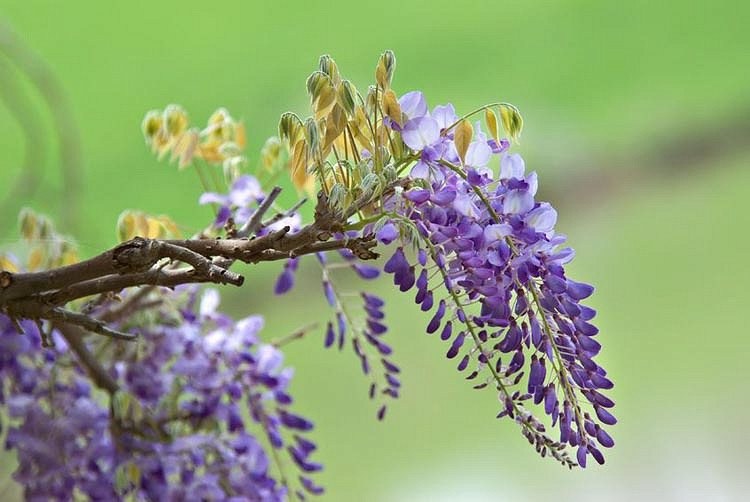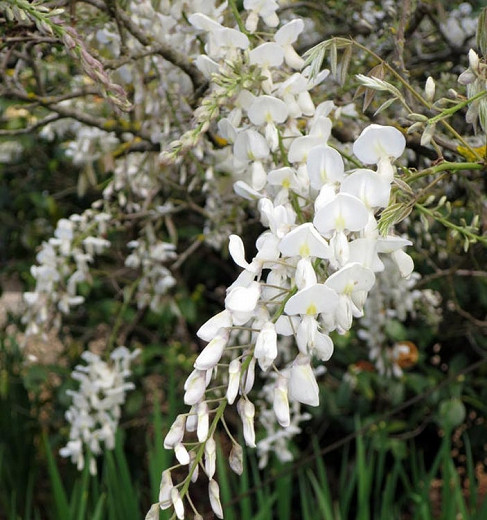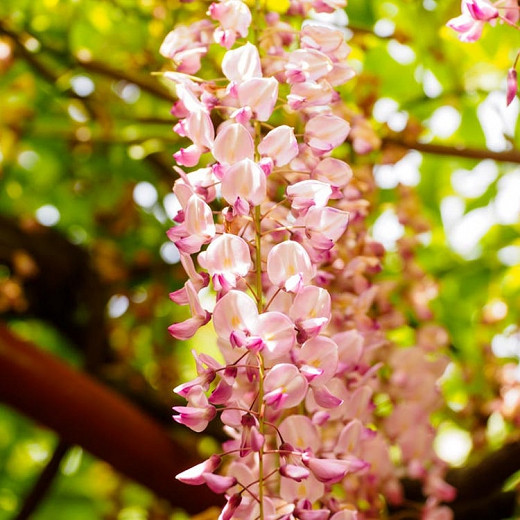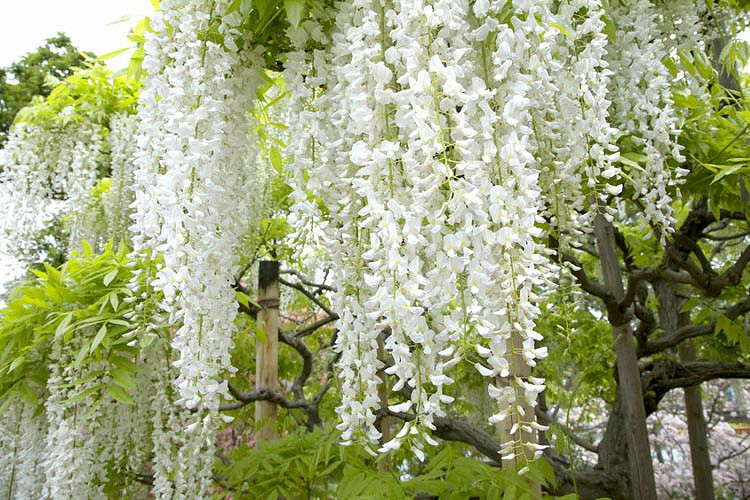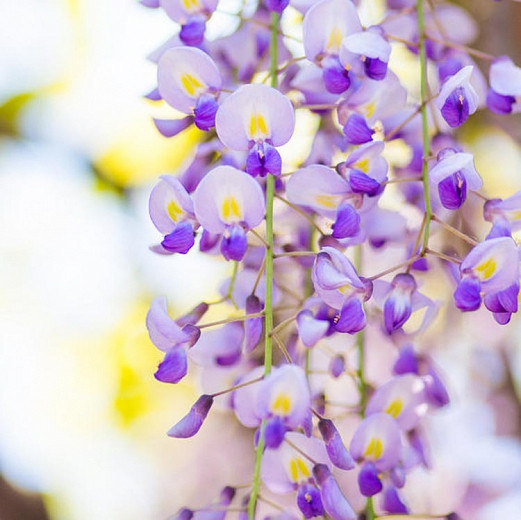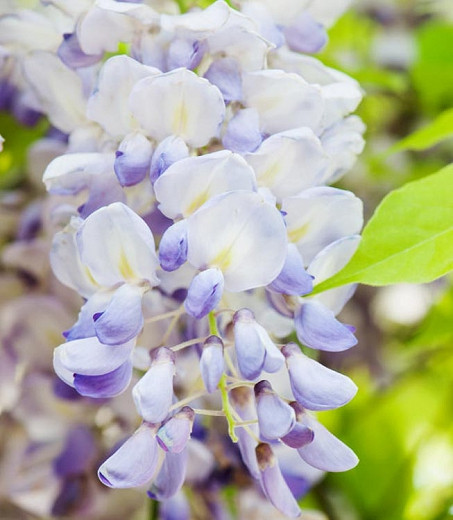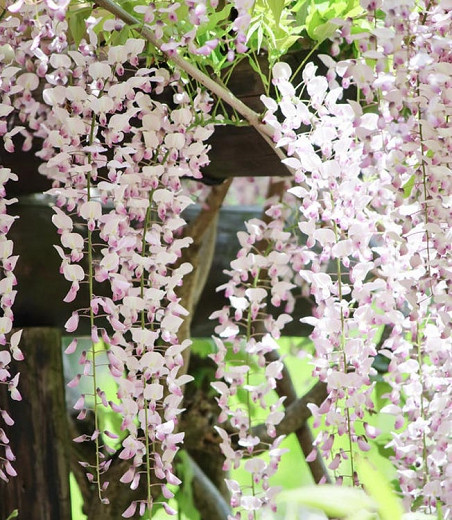Wisteria floribunda Rosea (Pink Japanese Wisteria)
Noted for its excellent fragrance, award-winning Wisteria floribunda 'Rosea' (Pink Japanese Wisteria) is a strong-growing climber with twining stems of great beauty. It produces masses of very long drooping clusters, up to 24 in. long (60 cm), packed with pea-like, pale rose flowers tipped with purple. Blooming from the base of each cluster to the tip, they appear in late spring or early summer along with the leaves. The flowers are followed by attractive, bean-like pods, which ripen in late summer and may persist into winter. Equally attractive is the dense foliage of dark green, pinnate leaves which consist of 15 lance-shaped leaflets and puts on a good fall show. This Pink Japanese Wisteria is perhaps the most romantic Wisteria and surely a real showstopper!
- Winner of the prestigious Award of Garden Merit of the Royal Horticultural Society
- A long-lived climber, this Japanese Wisteria can grow vigorously up to 20-25 ft. tall (6-7.5 m). It climbs by twining clockwise (from left to right around the axis).
- Thrives in full sun or part shade, in moderately fertile, medium moisture, well-drained soils. Drought tolerant. Best flower production is obtained in full sun.
- Can be grown against a house wall, arbors, pergolas, trellises, fences, or trained as a free-standing half standard in a container. It must be sited and trained on sturdy structures which will be able to support the heavy weight of the mature Wisteria. Grow this plant around patios where the flowers can be enjoyed.
- Susceptible to foliage-chewing insects and fungal diseases, but none are significant. Deer resistant
- Needs regular pruning in order to control the size and shape of the plant and to promote flowering.
- Propagate by layering, softwood cuttings, hardwood cuttings, or grafting. Choose sites wisely because plants dislike being transplanted.
- All parts may cause severe discomfort if ingested.
- Toxic to dogs, toxic to cats, toxic to horses.
- Wisteria floribunda species is native to temperate Asia, Japan.
- Find where this species is invasive in the United States.
- If you love the spectacular beauty of wisteria, the native American species, Wisteria frutescens, is a great alternative. It is less invasive than its Asian cousins and much less likely to get out of control.
Requirements
| Hardiness | 5 – 9 |
|---|---|
| Heat Zones | 3 – 9 |
| Climate Zones | 3, 3A, 3B, 4, 5, 6, 7, 8, 9, 10, 11, 12, 13, 14, 15, 16, 17, 18, 19, 20, 21, 22, 23, 24 |
| Plant Type | Climbers |
| Plant Family | Wisteria |
| Exposure | Full Sun, Partial Sun |
| Season of Interest | Spring (Late)Summer (Early,Mid) |
| Height | 10' – 25' (3m – 7.5m) |
| Spread | 4' – 8' (120cm – 240cm) |
| Water Needs | Average |
| Maintenance | High |
| Soil Type | Chalk, Clay, Loam, Sand |
| Soil pH | Acid, Alkaline, Neutral |
| Soil Drainage | Moist but Well-Drained |
| Characteristics | Fragrant, Plant of Merit, Showy |
| Tolerance | Deer, Drought |
| Attracts | Butterflies |
| Garden Uses | Arbors, Pergolas, Trellises, Wall-Side Borders, Walls and Fences |
| Garden Styles | City and Courtyard, Informal and Cottage |
